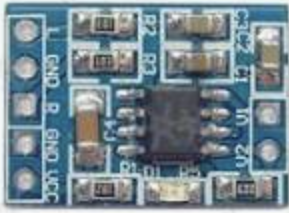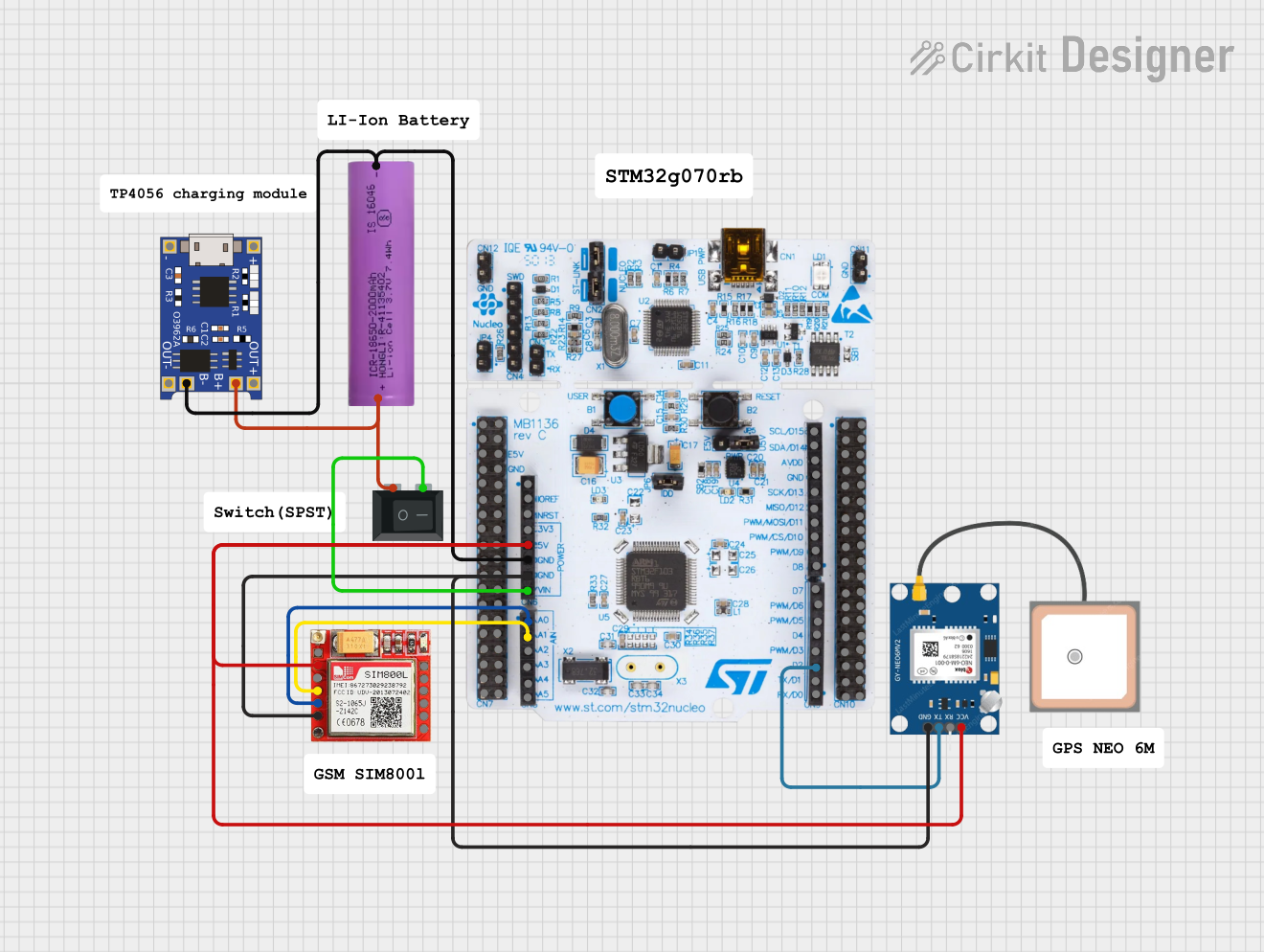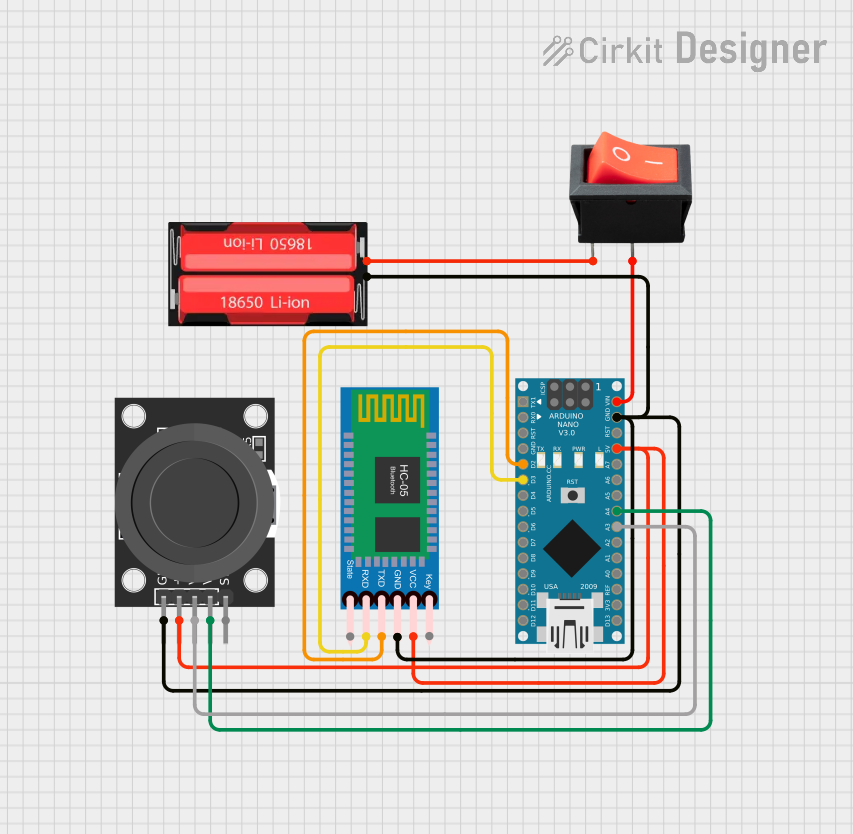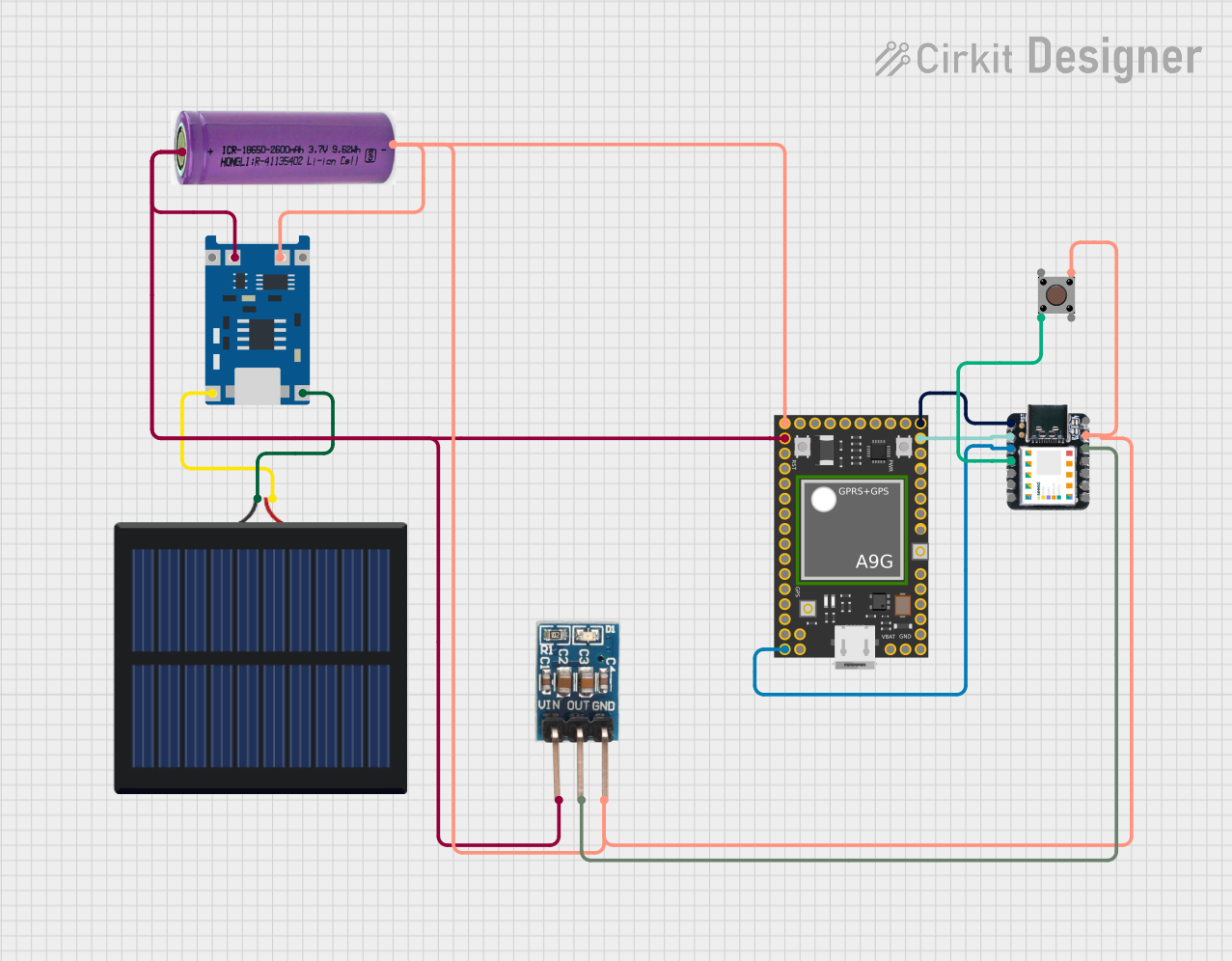
How to Use hxj8002: Examples, Pinouts, and Specs

 Design with hxj8002 in Cirkit Designer
Design with hxj8002 in Cirkit DesignerIntroduction
The HXJ8002 is a high-performance integrated circuit (IC) designed by Arduino for a wide range of applications, including power management and signal processing. This IC is known for its low power consumption and high efficiency, making it an ideal choice for battery-operated devices and portable electronics. Its compact design and robust functionality allow it to be used in various consumer electronics, audio systems, and embedded systems.
Explore Projects Built with hxj8002

 Open Project in Cirkit Designer
Open Project in Cirkit Designer
 Open Project in Cirkit Designer
Open Project in Cirkit Designer
 Open Project in Cirkit Designer
Open Project in Cirkit Designer
 Open Project in Cirkit Designer
Open Project in Cirkit DesignerExplore Projects Built with hxj8002

 Open Project in Cirkit Designer
Open Project in Cirkit Designer
 Open Project in Cirkit Designer
Open Project in Cirkit Designer
 Open Project in Cirkit Designer
Open Project in Cirkit Designer
 Open Project in Cirkit Designer
Open Project in Cirkit DesignerCommon Applications
- Battery-powered devices
- Audio amplification systems
- Signal processing circuits
- Portable consumer electronics
- Embedded systems requiring efficient power management
Technical Specifications
Key Technical Details
| Parameter | Value |
|---|---|
| Manufacturer | Arduino |
| Part ID | HXJ8002 |
| Operating Voltage Range | 2.5V to 5.5V |
| Output Power | 3W (at 4Ω load, 5V supply) |
| Efficiency | Up to 90% |
| Quiescent Current | < 10mA |
| Operating Temperature | -40°C to +85°C |
| Package Type | SOP-8 |
Pin Configuration and Descriptions
| Pin Number | Pin Name | Description |
|---|---|---|
| 1 | IN+ | Non-inverting input for the audio signal |
| 2 | IN- | Inverting input for the audio signal |
| 3 | GND | Ground connection |
| 4 | VDD | Power supply input (2.5V to 5.5V) |
| 5 | OUT+ | Positive output for the amplified signal |
| 6 | OUT- | Negative output for the amplified signal |
| 7 | SHDN | Shutdown control pin (active low) |
| 8 | NC | No connection (leave unconnected or grounded) |
Usage Instructions
How to Use the HXJ8002 in a Circuit
- Power Supply: Connect the VDD pin to a stable power source within the range of 2.5V to 5.5V. Ensure proper decoupling capacitors (e.g., 0.1µF and 10µF) are placed close to the VDD pin to minimize noise.
- Input Signal: Feed the audio or signal input to the IN+ and IN- pins. Use appropriate coupling capacitors (e.g., 1µF) to block DC components in the input signal.
- Output Load: Connect the OUT+ and OUT- pins to the load (e.g., a speaker or other device). Ensure the load impedance matches the IC's specifications (e.g., 4Ω or 8Ω).
- Shutdown Control: Use the SHDN pin to enable or disable the IC. Pull the SHDN pin high to enable the IC, or pull it low to put the IC into shutdown mode to save power.
- Grounding: Connect the GND pin to the circuit's ground. Ensure a solid ground plane to reduce noise and improve performance.
Important Considerations and Best Practices
- Thermal Management: Ensure adequate ventilation or heat dissipation if the IC operates at high power levels for extended periods.
- Signal Integrity: Use short and direct traces for the input and output signals to minimize noise and distortion.
- Decoupling: Always use decoupling capacitors near the VDD pin to stabilize the power supply and reduce noise.
- Shutdown Pin: If the SHDN pin is not used, connect it to VDD to keep the IC enabled.
Example: Connecting HXJ8002 to an Arduino UNO
The HXJ8002 can be used with an Arduino UNO to amplify audio signals. Below is an example code snippet to generate a simple PWM signal for audio output:
// Example: Generating a PWM signal for HXJ8002 using Arduino UNO
// Connect Arduino pin 9 to the IN+ pin of HXJ8002
// Connect GND of Arduino to GND of HXJ8002
void setup() {
pinMode(9, OUTPUT); // Set pin 9 as an output pin
}
void loop() {
// Generate a simple PWM signal
analogWrite(9, 128); // 50% duty cycle (128 out of 255)
delay(1000); // Wait for 1 second
analogWrite(9, 64); // 25% duty cycle (64 out of 255)
delay(1000); // Wait for 1 second
}
Note: Use a low-pass filter (e.g., an RC filter) between the Arduino output and the HXJ8002 input to smooth the PWM signal into an analog waveform.
Troubleshooting and FAQs
Common Issues and Solutions
No Output Signal
- Cause: The SHDN pin is not properly configured.
- Solution: Ensure the SHDN pin is pulled high to enable the IC.
Distorted Output
- Cause: Input signal is too strong or improperly coupled.
- Solution: Use appropriate coupling capacitors and ensure the input signal is within the IC's acceptable range.
Overheating
- Cause: Excessive power dissipation or insufficient ventilation.
- Solution: Reduce the load or improve heat dissipation with a heatsink or better airflow.
Noise in Output
- Cause: Poor grounding or insufficient decoupling.
- Solution: Ensure a solid ground connection and use decoupling capacitors near the VDD pin.
FAQs
Q1: Can the HXJ8002 drive a 2Ω load?
A1: No, the HXJ8002 is designed for a minimum load impedance of 4Ω. Using a 2Ω load may cause overheating or damage.
Q2: What happens if the SHDN pin is left floating?
A2: Leaving the SHDN pin floating may result in unpredictable behavior. Always pull it high (to VDD) or low (to GND) as needed.
Q3: Can I use the HXJ8002 for stereo audio applications?
A3: The HXJ8002 is a mono amplifier. For stereo applications, you will need two HXJ8002 ICs, one for each channel.
Q4: Is the HXJ8002 suitable for high-fidelity audio applications?
A4: The HXJ8002 is optimized for efficiency and general-purpose audio amplification. For high-fidelity applications, consider using a dedicated audio amplifier IC with lower distortion and noise levels.